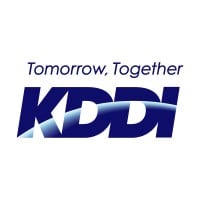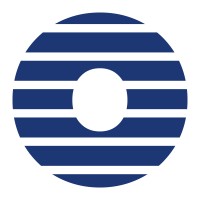Company Cyber Security Posture
NANA
NA Company Details
NA
NA
NA
NA
NA
NA
Scan still pending
NA
NA
Between 200 and 800
This score is AI-generated and less favored by cyber insurers, who prefer the TPRM score.
 NA Global Score
NA Global Score.png)

Company Scoring based on AI Models
| Model Name | Date | Description | Current Score Difference | Score |
|---|---|---|---|---|
| AVERAGE-Industry | 03-12-2025 | This score represents the average cybersecurity rating of companies already scanned within the same industry. It provides a benchmark to compare an individual company's security posture against its industry peers. | N/A | Between 200 and 800 |
Company Cyber Security News & History
| Entity | Type | Severity | Impact | Seen | Url ID | Details | View |
|---|
Company Subsidiaries

NA
Access Data Using Our API

Get company history
.png)
NA Cyber Security News
China Mobile Won't Give Up Info In Federal Probe, FCC Says
China Mobile has failed to fully cooperate with an investigation of whether the company is violating restrictions on its US operations.
FCC investigating China-linked companies over evasion of US national security measures
The Federal Communications Commission on Friday said it is investigating whether companies aligned with the People's Republic of China are still ...
Sensitive phone data flows through China
Last year, the U.S. accused China of targeting several politicians' phones in the Salt Typhoon campaign. The New York Times reported that now- ...
FCC Investigates CCP Orgs for Evading US Operations Ban
FCC chair warns these companies may still be operating in the US because they don't believe that being added to its "Covered List" poses any ...
US FCC launches probes into CCP-linked entities amid national security concerns
The US Federal Communications Commission (FCC) has launched an investigation into entities aligned with the Chinese Communist Party (CCP).
SWOT Analysis of China Mobile (Updated [year])
China Mobile has a golden chance in China's vast and fast-growing market. As the economy grows, demand for telecommunications services will rise ...
FCC Investigates Chinese Entities on U.S. Government’s Prohibited List
Federal Communications Commission (FCC) Chairman Brendan Carr has announced a comprehensive investigation into Chinese companies suspected ...
Chinese hack of global telecom providers is ‘ongoing,’ officials warn
The federal government began investigating a major Chinese breach of global telecommunications systems in the spring, officials said Tuesday.
Managing the Risks of China’s Access to U.S. Data and Control of Software and Connected Technology
China's sophisticated hacking operation has multiple avenues to exploit U.S. data, influence U.S. opinion, and breach U.S. networks without ...

NA Similar Companies

Totalplay
Somos una empresa orgullosamente mexicana, líder en tecnología, telecomunicaciones y entretenimiento. Estamos siempre a la vanguardia con el objetivo de llevar a nuestros clientes lo mejor en conectividad, ya sea para que estén cerca de los que más quieren ó puedan alcanzar el éxito profesion

KDDI Corporation
We are Japan’s global telecommunications pioneer and a Global Fortune 500 company providing our international customer base with data centers, networks, content delivery, system integration, and more around the world. If your business needs telecom support internationally, we are here at your serv

Liberty Global
Liberty Global is a world leader in converged broadband, video and mobile communications and an active investor in cutting-edge infrastructure, content and technology ventures. With our investments in fibre-based and 5G networks we play a vital role in society, currently providing over 85 million f

Openreach
We’re the people that make the net work. As the nation’s largest wholesale broadband network, we’re rolling out Ultrafast Full Fibre broadband across the UK. It’s our fastest and most reliable broadband yet, and we’re well on our way to making it available to 25m homes and businesses – building the

Telemont
Fundada em 1975, a Telemont Engenharia de Telecomunicações S/A é líder na prestação de serviços de implantação, manutenção e operação de redes de telecomunicações. São 7,7 milhões de acessos de voz, 3 milhões de ADSL e dados e 63 mil km de fibra óptica operados pela empresa. At

TIM Brasil
A TIM é a empresa de telefonia móvel que mais cresce no Brasil. Atualmente, possui mais de 13 mil colaboradores em todo o país que trabalham entregando serviços inovadores e de qualidade em telefonia móvel, fixa e internet banda larga. É uma companhia feita de pessoas criativas, com energia real

Frequently Asked Questions
Explore insights on cybersecurity incidents, risk posture, and Rankiteo's assessments.
NA CyberSecurity History Information
How many cyber incidents has NA faced?
Total Incidents: According to Rankiteo, NA has faced 0 incidents in the past.
What types of cybersecurity incidents have occurred at NA?
Incident Types: The types of cybersecurity incidents that have occurred include .
Additional Questions
What Do We Measure?
















Every week, Rankiteo analyzes billions of signals to give organizations a sharper, faster view of emerging risks. With deeper, more actionable intelligence at their fingertips, security teams can outpace threat actors, respond instantly to Zero-Day attacks, and dramatically shrink their risk exposure window.
These are some of the factors we use to calculate the overall score:
Identify exposed access points, detect misconfigured SSL certificates, and uncover vulnerabilities across the network infrastructure.
Gain visibility into the software components used within an organization to detect vulnerabilities, manage risk, and ensure supply chain security.
Monitor and manage all IT assets and their configurations to ensure accurate, real-time visibility across the company's technology environment.
Leverage real-time insights on active threats, malware campaigns, and emerging vulnerabilities to proactively defend against evolving cyberattacks.




